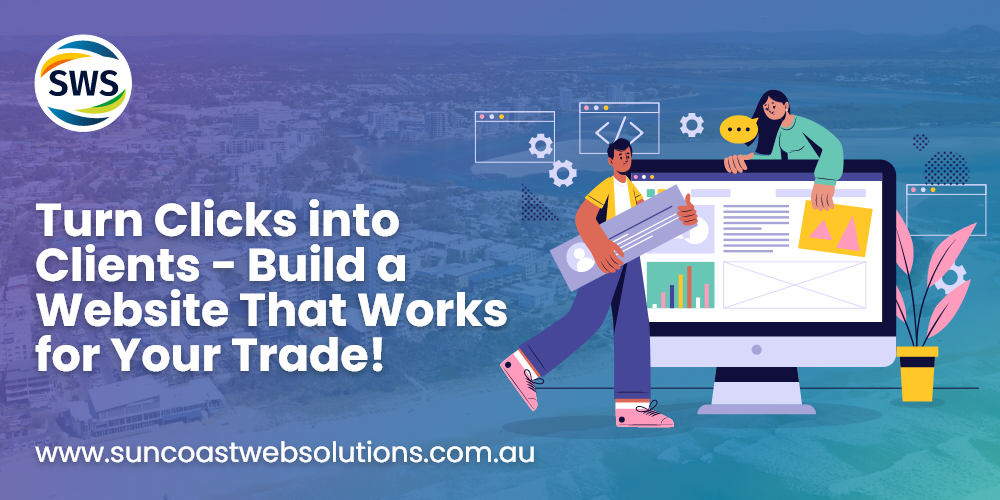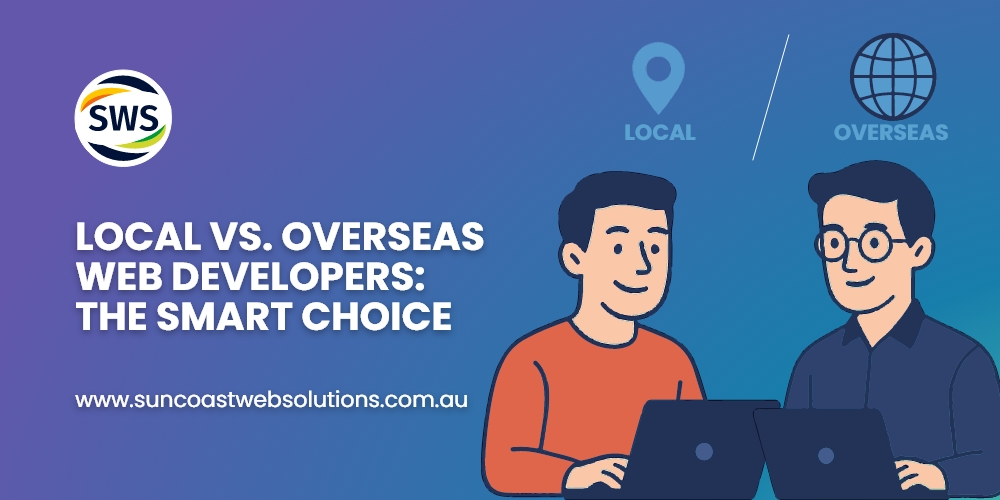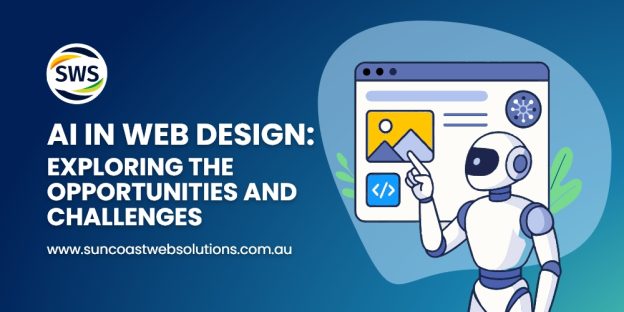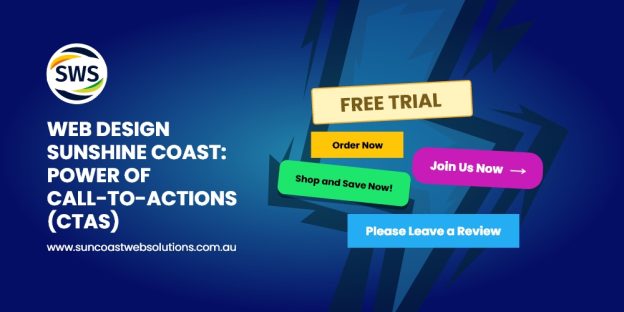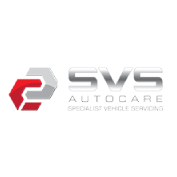Why is Content Important in Website Design

 17th
Aug, 2021
17th
Aug, 2021
High-quality content is crucial to the success of any website to retain visitors and have a high ranking in search engines. Naturally, web design is also crucial in making a good impression on your visitors, but the content on your website is what will keep them coming back.
In 1996, Bill Gates wrote an essay titled “Content is King”, which was published on Microsoft.com. Gates stated, “Content is where I expect much of the real money will be made on the Internet, just as it was in broadcasting.”. Gates was correct in his predictions. Content is still what propels the internet today two decades later.
What is Content in Web Design?
Web content is the textual, visual, or aural content that is encountered as part of the user experience on websites. It may include among other things text, images, sounds, videos, and animations.
The key to a successful website design is having clear, relevant and keyword-rich content that delivers the right message with power and conviction. The content on your website should target your audience, engage them and persuade them to take action.
Why Content On Your Website Is So Important
- Information : Content provides information and this information can be used to educate search engines about your website. You should always keep in mind how your website is portrayed to search engines and whether it accurately communicates your website’s purpose. Your purpose may be to provide information, to sell something or to offer a service. You should always optimize your website in such a way that search engines know what it’s about. That way, search engines will know when to show your website and its pages in the search results for relevant search queries. When users come to your site, they’re most likely looking for something such as a product, service or information. One of the ways to provide this information and details concerning products and services is through content and well web design. Providing users with the information that they’re looking for clearly and easily can help keep users on your site and increase conversions.
- Internal Links : Content also provides a great opportunity for internal links. An internal link is a text within the content that is hyperlinked to another relevant page on your website. Internal linking is a great way to lead users to additional information that they may be looking for. Search engines also like to see internal links throughout a website. As search engines crawl and index the pages on your site, they often move from one page to the next through internal links. Therefore, internal links may help the pages on your website to be indexed and understood by search engines faster.
- Keywords : Content should always reflect your keyword strategy. Keywords are the terms that you want to be found for online and that best describe your products and/or services. These terms should be unique to each page on your website. Content is a great place to highlight these keywords in a natural, relevant way and to help search engines make the connection between your website and the keywords that you want to rank for.
- Calls to Action: You can also use content to provide a call to action to your audience. A call to action is an invitation to users to complete an action. A few examples of calls to action are: contact us, request a quote, add to cart, leave a review and download a PDF or whatever it is you might want users to do on your website. Adding calls to action throughout your site may help to increase conversions through your website. In our industry, we often say that content is king. Not only can content improve your search engine rankings, bring quality visitors to your website and increase user experience, it can also help convert users into customers or fans.
How Many Types Of Content Are There?
Content is the currency of the internet, and there are hundreds of types that brands can focus on creating to engage audiences, reach new target markets, provide value to customers, and entice new prospects.
But with all the different types of content that are out there, it can be difficult for brands to know which ones to focus on, so today we’re going to go over the top content types and how you can use them to drive growth.
- Web Page : Web Page content refers to all the information contained in a website. Page content can be displayed as text, links, images, audio, animation or videos among other things. Search engines have a limited ability to recognize images, animation, video and audio.
- Blogs : Today’s blogs are relevant, high-quality, and well-written pieces about topics that your audience finds interesting, so they can be a great tool for building authority, trust, and relationships, and consequently driving conversions. Other benefits of a blog are that posts are relatively easy to write and publish, they’re highly shareable, and they’re easily discovered by search engines.
- List Articles : List articles may seem somewhat gimmicky, but they’re extremely popular and aren’t going anywhere. One of the reasons they’re so popular is because they’re easy to read, scannable, visually appealing, and—when done right—interesting and highly shareable.
- eBooks : Ebooks are a type of long-form content, and as the name suggests, they’re electronic books that are often available as PDF downloads or in HTML format. This type of content can give you a great outlet for sharing your knowledge and expertise on a given topic. Ebooks have several benefits, including lead generation, establishing authority, growing email lists, and beefing up your overall content offering.
- Infographics : Infographics are among the most popular types of content you can create, and this is because they present a great deal of information in a visual way that’s engaging, digestible, and shareable.
- Video : Video is an enormously successful form of content, and by 2020 it’s expected to account for 80 per cent of all web traffic. Moreover, 96 per cent of consumers find product videos helpful, and nearly 75% are more likely to purchase after watching a video.
- How-to Guides: How-tos and instructional content are similar to long-form blog posts that go into great depth about how to do anything from achieving a task to building something and more. The exact nature of your tutorial will depend on your audience and your industry, but this type of content is great for sharing expertise, building trust, and growing email lists.
- Case Studies: Case studies are a good way of making issues relatable because they use archetypal examples to illustrate common pain points and challenges your audience may face. Another reason it’s a good content choice is that it demonstrates to prospects how your brand, products, or services can help solve problems they may be experiencing, and this will foster strong relationships and build loyalty.
Can you design a website without content?
Website designing without content is similar to cooking with a bunch of ingredients but no recipe. The answer is no. We’ve tried it in the past, and refuse to do it again. Having content, in the beginning, is the ONLY way to create a quality website design that works.
Building a website is like building a house. There’s a LOT that goes into it, even before the actual construction work begins. Planning a website without knowing what content needs to be covered is like creating a blueprint without knowing how many rooms are needed or what size lot you’re working on.
What Are The Basic Elements Of Web Content?
There are main basic elements of website design, each one of these fundamentals contributes in its way to the overall user experience. Therefore, you must make sure that a single element doesn’t let down the entire website.
- Content: There’s no denying that ‘Content is King’. It plays a massive role in Search Engine Optimisation (SEO) and is one of the main reasons people visit your website. You need to focus a great deal of effort into creating first-class content for your website, which should include videos, relevant news/information and high-resolution imagery to make your website ‘stickier’. This will ensure you keep your users on your website for longer.
- Goal-Oriented: What do you want your content to accomplish? Knowing that is the first step in achieving your goal. For example, you might have content to educate readers about what you sell (and why they need it), content to persuade them to buy, content that’s purely product descriptions or content that gets them to follow you on social media.
- Easy To Read: Who’s got time to wade through long, drawn-out content online? Not me—and not your customers, either. Convey the key points quickly with short paragraphs, plenty of subheads, and bulleted or numbered lists so people can get the gist at a glance. To maximize your audience, your content should be at or below a sixth-grade reading level. Try using Hemingway Editor—it helps you improve readability and assess your writing’s grade level.
- Usability: Great usability will never be noticed by the end-user, but bad usability instantly stands out. Your website must be easily navigable, intuitive, accessible and mobile-friendly. The user should know where they are on the website at all times and be able to find where they want to go with little thought. They should also be able to access any page they need without having to view the whole site. Your website should try to anticipate what your visitors are thinking and help them to fulfil their needs with as little effort as possible.
- Aesthetics: In this day and age, having a visually impressive website across all devices is crucial. However, you must maintain your brand image. Your website must reflect who you are as a business, and visually connect with the audience. The visual appeal of your website not only contributes to your brand awareness but also increase your credibility.
- Visibility: If you had the most aesthetically pleasing and user-friendly website on the web, it would still be unsuccessful unless it could be found. Your presence and visibility through digital marketing campaigns including SEO, social media and email marketing are vital to the success of your website. You must understand how to be found, what platforms to target and how to utilise your content. Thousands of factors have an impact on where you appear within the search engines, so make sure you have a plan in place!
- Interaction: Your website must engage with your audience, hold their attention, direct them through the stages of your website and finally encourage them to contact you. Your website isn’t just there for show, it is there to help you generate leads, increase sales and grow your business so ensure your website engages with your visitors correctly.
- Designed For Your Target Customer: Web content is always more effective if it’s written with a specific person in mind. If you have buyer personas for your customers, imagine those as you write. If you don’t, imagine someone you know who fits your target customer profile. If your business target multiple different kinds of customers, that’s OK—just create web content tailored for each of them. For instance, a healthy restaurant might have different content for people following different types of diets.
- Action-oriented: All of your online content should include a call to action of some kind. In most cases, this will be something that moves readers closer to buying from you. For instance, your blog post on “How Often Does My Dog Need a Walk?” could end with “Schedule your first dog walk by September 30 and get 20% off your first month.” You can also encourage readers to take more general actions aligned with your business values, such as playing with their dog more often or scheduling regular vet appointments.
What Is Website Design?
Web design refers to the design of websites that are displayed on the internet. It usually refers to the user experience aspects of website development rather than software development. Web design used to be focused on designing websites for desktop browsers; however, since the mid-2010s, design for mobile and tablet browsers has become ever-increasingly important.
A web designer works on the appearance, layout, and, in some cases, content of a website. Appearance, for instance, relates to the colours, font, and images used. Layout refers to how information is structured and categorized. A good web design is easy to use, aesthetically pleasing and suits the user group and brand of the website.
What Is Website Structure?
Your site’s structure is how the different pages on your site are interlinked and their hierarchy. It is how the information on your site is organized and presented. Good website structure facilitates easy navigation for both users and crawlers which improve the SEO ranking of your website.
Why Website Structure Important For Website Design?
The role of a professional web designer is to create a website that has a great UX and is easy to use. A great website structure improves the usability or user-friendliness of your website by making it easy for users to find what they are looking for.
How To Choose The Best Structure For A Website
The underlying principle in great website structure is Information Architecture. It ensures that content is organized, structured, and labelled effectively and consistently. For you to create the best information architecture for your website, you need to consider the following factors:
- User Journey: Since websites are created to serve users, it is important to consider how they might experience or interact with your site and their expectations of how your website should work. You can determine the journey of your users by interviewing them or doing a card sorting exercise.
- Content: The structure of your website will also be largely determined by the type and volume of content on your site. The structure of an e-commerce site will be different from the structure of an academic site.
- Context: The context of a website is determined by its business goals, the cultural context that it exists in, and the resources available. It is important to consider this fact as you structure your website.
Why Is Information Architecture Important To Web Design?
Information architecture (IA) is a key aspect of UX design that focuses on organizing information, structuring Websites and helping users navigate them to find and process the information they need.
The importance of Information Architecture can hardly be overstated. Proper IA helps you avoid navigation and usability issues and maintain product consistency. A properly structured and search engine optimized IA guarantees a product’s long-term success. Here are other benefits of IA for businesses:
- Better Knowledge Of The Context Of Existing Content.
- Lower Production Costs Due To Increased Content Reusability.
- Simplified Web Design Processes.
- More Options To Expand To New Markets.
What Is User Interface In Website Design?
User interface design or UI design generally refers to the visual layout of the elements that a user might interact with within a website. This could be the control buttons of a radio or the visual layout of a webpage.
- UI design process by defining the visual direction and layout. Our UI/UX designer decides on a preliminary product structure and considers what guidelines to follow.
- After that, we conduct a series of interviews with you to establish a visual language according to your business needs.
Based on this information, our web designer will create mockups and any other graphics (icons, banners, illustrations, animations, etc.) required for the visual language, which allows us to increase the speed of development and maintain visual consistency.
Web Design Vs Web Content – Which Is Most Important?
The debate of Web Design vs Content is much like the chicken and the egg scenario – which came first and which is more important?
In its most essential form, content is the material that users consume. Content can take the shape of words, pictures, video and audio. It is the tangible material that people cognitively consume, where website design is the presentation of that content, influencing how people feel in the moment. They are symbiotic, yet distinct in their own right.
What Is The Most Important Part Of A Website?
The most important part of any website is content. Without content, your website is nothing more than an advertisement, which is not an effective online marketing strategy. The goal of any marketing professional that designs websites should always be to create an online resource for people. It sounds simplistic, but it’s true; which is why the most well-known websites on the internet have the most content. The reality is that web design and content are completely separate.
Content is King
There are several reasons why content is considered more important than design in marketing. Content marketing is a strategic way to create and provide valuable and relevant content to your audience that will lead them to action. By providing this relevant content specific to your audience, they will begin to trust you. It is what some people say to be what makes content marketing stand out. Useful content should be the core of your marketing. It is the core of how you can be discovered by new customers organically, creating a connection between them and your brand.
Website Design Is More Crucial Than Content, Why?
In our marketing debate, web design is more important than content. Do you think Design first will benefit your business more? There are many key concepts to design that goes further than just making things look aesthetic. Design is used to initially attract eyes to your brand and highlight the content. Design is what connects your company to your brand, and more importantly, your customer.
Let’s be honest, we all have, in one way or another, “JUDGED A BOOK BY ITS COVER“. This notion, however, also extends to online. Often users click into a poorly designed website and will immediately click out without even reading the second line, greatly hindering your content strategy. This is exactly what Google looks for as part of their algorithm; audience engagement, and what pulls the audience in.
First Impression Vs Lasting Impression
When someone visits your website, they will probably make their minds up in the first few seconds about whether they are going to use your site or leave and find another. First impressions count. What makes that first impression? Your website’s design. The first thing visitors to your website notice is the design. Have you ever visited a website and had your attention immediately drawn to the content, or do you make quick judgements about the site based on how it looks? As consumers, we are trained to make assumptions about a business and create our image of them based on what we see.
What Helps You Rank Higher In Search Engines?
It’s one thing keeping a visitor on your site, it’s another to get visitors to your site. Your website is a crucial tool in helping to boost your SEO. The way your website is designed can have a large impact on your SEO results. There are several design factors to consider here including:
- The Navigation
- The Link Structure
- The Urls
- Making The Website Mobile-Friendly
- User-Friendly Layout
Considering these factors can seriously boost your site’s SEO. However, again, it’s not all about the design. The content on your site is as vital to boosting your SEO as the actual design of the website. Factors to consider include:
- Use Of Keywords
- Originality, Usefulness And Reliability Of The Content
- Different Multimedia E.G. Images, Videos And Slideshows
- Readability
- Metadata
As you can see, there are several things you can do to improve both the website design and content of your website that will help boost your search engine rankings.
Conclusion: Both Are Essential For Your Online Business Success
Both components are crucial to the overall success of a strategy. But in saying that, it all comes back to the chicken and the egg – in the battle between web design and content… It’s a tie! Both are huge factors to consider when creating a website and there are reasons for both being important. However, the simple fact is your website is not going to be very successful in obtaining new customers if you don’t consider both of these factors.
DOES YOUR WEBSITE WORK FOR YOUR BUSINESS?
Your website should be number one at marketing and selling your business. If it isn’t, you need a new one!
Listen to the audio version of this article – Why is Content Important in Website Design
we are your one-stop internet marketing solution on the sunshine coast!


